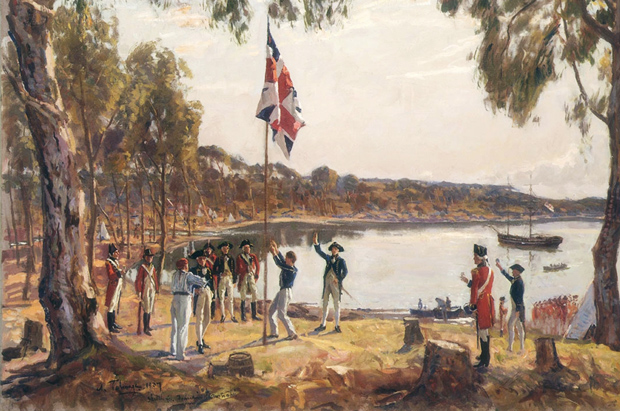
December 3, 2016
by Anne Miller
A decision by a West Australian council to move “Australia Day” celebrations forward a couple of days from January 26 has had the predictable response.
Even local LNP MP Deb Frecklington has jumped on the bandwagon.
But before anyone rushes out to tattoo another Southern Cross on their shoulders, perhaps it’s time to re-examine EXACTLY what happened on January 26 and question why it has become such an important date on the national calendar.
First, let’s bust a couple of myths …
January 26 has nothing whatsoever to do with Captain James Cook. He anchored his British Navy vessel in Botany Bay on April 19, 1770.
January 26 has nothing whatsoever to do with Captain Arthur Phillip and the First Fleet arriving in New South Wales. That occurred in Botany Bay on January 18, 1788.
January 26 also has nothing to do with Captain Phillip first stepping ashore anywhere in Sydney Harbour. That occurred on January 22, 1788.
So what did actually happen on January 26?
From An Account of the English Colony of NSW by David Collins
In the evening of this day the whole of the party that came round in the Supply were assembled at the point where they had first landed in the morning, and on which a flag-staff had been purposely erected and an union jack displayed, when the marines fired several vollies; between which the governor and the officers who accompanied him drank the healths of his Majesty and the Royal Family, and success to the new colony.
It is important to note that the rest of the First Fleet were still in Botany Bay at this stage, only the Supply had re-located to Port Jackson.
Also, although some male convicts had disembarked earlier in the day to help clear the campsite, the majority were still on board their vessels.
There is no mention in either Collins’ or Governor Phillip’s accounts that any convicts were present at the flag-raising.
No female convicts – and the sick – were allowed off their ships until February 6, despite the fact the horrendous journey had started in May 1787.
The January 26 flag ceremony only consisted of uniformed free men: the Governor, a few naval officers and armed marines who fired shots into the air (which must have startled any Gadigal people watching).
The people whose destiny it was to build what would come to be called Australia – the male and female convicts – were not present.
The flag this English military party hoisted was a Union Flag from 1788, different to the flag that has pride of place in the corner of the Australian Flag today. The red diagonal St Patrick’s Cross (representing Ireland) was not added until 1801.
Curiously, the January 26 event was considered so unimportant by contemporaries that it is mentioned in few of the diaries from the time, and no one seems to know where it occurred.
There is a debate amongst historians about whether the flag was hoisted on the east or the west side of the Tank Stream at Sydney Cove.
This flag-raising also coincided with the arrival in Botany Bay of Jean-François de Galaup La Pérouse, considered a much more important event to the English military!
The “official” ceremony to kick off the colony was held on February 7 (after the female convicts had disembarked).
From The Voyage of Governor Phillip to Botany Bay by Arthur Phillip
The 7th of February, 1788, was the memorable day which established a regular form of Government on the coast of New South Wales.
For obvious reasons, all possible solemnity was given to the proceedings necessary on this occasion. On a space previously cleared, the whole colony was assembled; the military drawn up, and under arms; the convicts stationed apart; and near the person of the Governor, those who were to hold the principal offices under him.
The Royal Commission was then read by Mr. D. Collins, the Judge Advocate. By this instrument Arthur Phillip was constituted and appointed Captain General and Governor in Chief in and over the territory, called New South Wales; extending from the northern cape, or extremity of the coast, called Cape York, in the latitude of 10 degrees, 37 minutes south, to the southern extremity of the said territory of New South Wales, or South Cape, in the latitude of 43 degrees, 39 minutes south, and of all the country inland to the westward, as far as the 135 degree of east longitude, reckoning from the meridian of Greenwich, including all the islands adjacent in the Pacific Ocean, within the latitudes aforesaid of 10°. 37′. south, and 43°. 39′. south, and of all towns, garrisons, castles, forts, and all other fortifications, or other military works which may be hereafter erected upon the said territory, or any of the said islands.
The Act of Parliament establishing the courts of judicature was next read; and lastly, the patents under the great seal, empowering the proper persons to convene and hold those courts whenever the exigency should require. The Office of Lieutenant Governor was conferred on Major Ross, of the Marines.
A triple discharge of musquetry concluded this part of the ceremony; after which Governor Phillip advanced, and addressing first the private soldiers, thanked them for their steady good conduct on every occasion: an honour which was repeated to them in the next general orders.
He then turned to the convicts, and distinctly explained to them the nature of their present situation. The greater part, he bade them recollect, had already forfeited their lives to the justice of their country: yet, by the lenity of its laws, they were now so placed that, by industry and good behaviour, they might in time regain the advantages and estimation in society of which they had deprived themselves. They not only had every encouragement to make that effort, but were removed almost entirely from every temptation to guilt.
There was little in this infant community which one man could plunder from another, and any dishonest attempts in so small a society would almost infallibly be discovered. To persons detected in such crimes, he could not promise any mercy; nor indeed to any who, under their circumstances, should presume to offend against the peace and good order of the settlement. What mercy could do for them they had already experienced; nor could any good be now expected from those whom neither past warnings, nor the peculiarities of their present situation could preserve from guilt.
Against offenders, therefore, the rigour of the law would certainly be put in force: while they whose behaviour should in any degree promise reformation, might always depend upon encouragement fully proportioned to their deserts.
He particularly noticed the illegal intercourse between the sexes as an offence which encouraged a general profligacy of manners, and was in several ways injurious to society. To prevent this, he strongly recommended marriage, and promised every kind of countenance and assistance to those who, by entering into that state, should manifest their willingness to conform to the laws of morality and religion.
Governor Phillip concluded his address by declaring his earnest desire to promote the happiness of all who were under his government, and to render the settlement in New South Wales advantageous and honourable to his country. This speech, which was received with universal acclamations, terminated the ceremonial peculiar to the day.
Nor was it altogether without its proper effect: For we are informed, that in the course of the ensuing week 14 marriages took place among the convicts.
The assembly was now dispersed, and the Governor proceeded to review the troops on the ground cleared for a parade: after which, he gave a dinner to the officers, and the first evening of his government was concluded propitiously, in good order and innocent festivity, amidst the repetition of wishes for its prosperity.
This ceremony, which appointed Phillip to his role and which was witnessed by both soldiers and convicts, seems to be far more significant legally and historically, than the January 26 flag-raising which was ultimately just a toast to the Crown.
However, the February 7 speech specifically excludes what was to become Western Australia, as well as much of South Australia and the Northern Territory.
This is another reason why the protests in Western Australia about the importance of January 26 seem odd. That State was specifically excluded from the ceremonies in 1788. WA’s Foundation Day (June 1) should have a lot more local significance to Sandgropers.
Even in Sydney, “Foundation Day” (January 26) was not a regular celebration until the 1830s and it remained a purely Sydney event for many years.
“Australia Day” became a national day about 100 years later, during the 1930s.
About the same time, Aboriginal groups started branding the event as a “Day of Mourning”, “Survival Day” or “Invasion Day” – so there is nothing new about pressure today to change the day to something that promotes unity rather than division.
January 26 only became a national public holiday during the 1990s.
In conclusion:
There’s nothing truly historical about the date January 26. It recognises when a group of uniformed men hoisted up a flag that is irrelevant to Australians today, toasted the Crown and fired some shots in the air. It was not the historical establishment of the New South Wales colony, and even the people at the time did not think it was significant.
There were no women present, and no convicts – only soldiers, sailors and marines. And like Phillip, the men would most likely have returned to England after their tour of duty. They were the prison guards and armed muscle, not the founders of the modern nation.
January 26 may have some significance to Sydney history, but it should not have much significance to the rest of Australia … at least not the misplaced patriotism that is now creating nastiness and name-calling on social media.
- External link: Australia Day Must Be Preserved As History Intended: In July







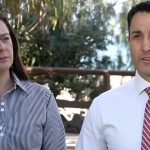





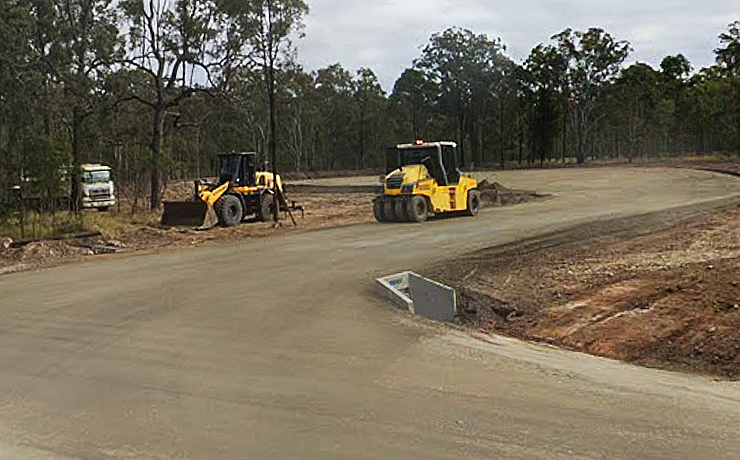

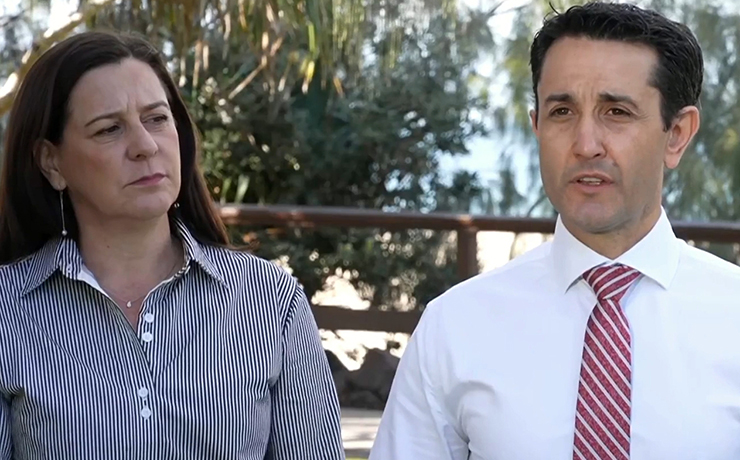
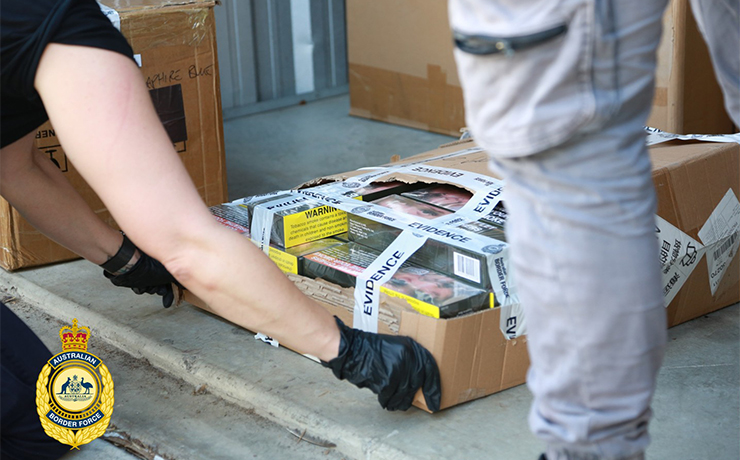







Ann Miller’s misinformation on Australia Day and our national flag is typical of the ad nauseam, anti-government, anti-Australian, anti-British, anti-Christian, anti-family, pro-feminist, pro-Pagan propaganda we are used to from the Marxist media and their friends, whose agenda is “divide and conquer” (a Roman maxim, still being very effectively employed by the “little horn” ruler of the revamped Roman Empire (Daniel 7), the counterfeit Christ who is the arch-enemy of Christ and His followers today whose faith still rejects him as a fraud and Antichrist and stands on the King James/Authorised Bible, the Word of God preserved in the English language, which was the product of the Hampton Court Conference and blessing of King James I and the Protestant Church of England and Parliament of 1604, which Guy Fawkes’ Jesuit assassination plot failed to destroy in 1605.
By the grace of God, I advise, for peace and prosperity and the blessing of God upon all, a repudiation of such lies, and a return to the simple, indisputable facts of our history and the faith of our Protestant forefathers:
• Australia Day rightly celebrates the raising of the Union Jack by Governor Arthur Phillip on 26th January 1788;
• Faithfulness to that Union Jack, which forms part of our own flag to this day, containing three national crosses and the Southern Cross, placed in the sky by Jesus Christ Himself (Colossians1:16);
• Faithfulness to our Commonwealth Constitution, which was framed by our forefathers’ “humbling relying on the blessing of Almighty God”; and
• Faithfulness to the King James Bible, which reveals and exalts our Lord Jesus Christ, King of kings and Lord of lords, the Word of God made flesh (John 1), Who still saves meek repentant sinners and still judges self-righteous rebels and wilful troublemakers.
Sincerely in His service,
Trevor W Sullivan,
Minister, Nanango Christian Faith Centre.
Thank you Pastor Sullivan for so cogently providing yet another argument why January 26 is an unsuitable day. It has the ability to engender rabid sectarianism in some sections of the community, the like that hasn’t been seen en masse in Australia since the 1940s. It may also surprise you, but many of Australia’s “Protestant” forefathers were in fact Irish Catholics, followers of your “little horn ruler … the arch-enemy of Christ” – terminology that I believe most mainstream Protestants today would shudder to see used.
Dear Anne (I’m sorry, I think I misspelt your name before),
Thank you for being honest enough to print my comments. That is rare in today’s media. But I notice you didn’t answer a single truth I stated, merely voiced a distaste for it.
You are correct in stating that many “Protestants” “shudder” at the plain truth, but there are some of all colours and creeds, who love the truth when they hear it. Sadly, many are deceived by their religious leaders (Protestant and Catholic), and the proof is all over the news. True followers of Christ are honest, if nothing else, and the Truth they speak is despised by many, even as Jesus was in His day, when He spoke openly against a corrupt Church and government and preached that all sinners should repent. By the way, my Grandfather was an Irish Catholic, but he was no flag-burning rebel rouser, and his brother died in France fighting for King and country, and the current flag, with its crosses, dates back to the federation year, 1901, something modern revisionists don’t like to admit. Sincerely, Trevor
I think you’re both wrong. The actual date is not important either way. Jesus wasn’t born on 25 Dec or the Queen born on the Queens birthday holiday. It is what it means that has any significance and it means different things to different people. Obviously Australia day means something quite different to the people that had previously colonised the country and had bent it to their hunting based culture of fire stick farming, and that won’t change by changing the date.
How shallow it is to think that changing a name or a date makes any significant difference to the meaning people give to something.
“A rose by any other name would smell as sweet”.
In my opinion it’s all part of a facade, so people can lie to themselves that they are doing something to improve on what they perceive to be a problem. When in reality they are doing nothing to address the cause of the perceived problem. It’s like rearranging the deck chairs on the Titanic, thinking it can make a difference.